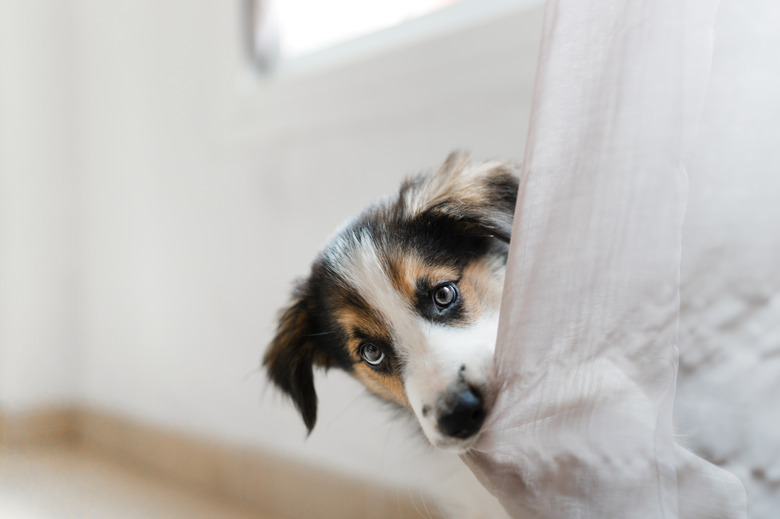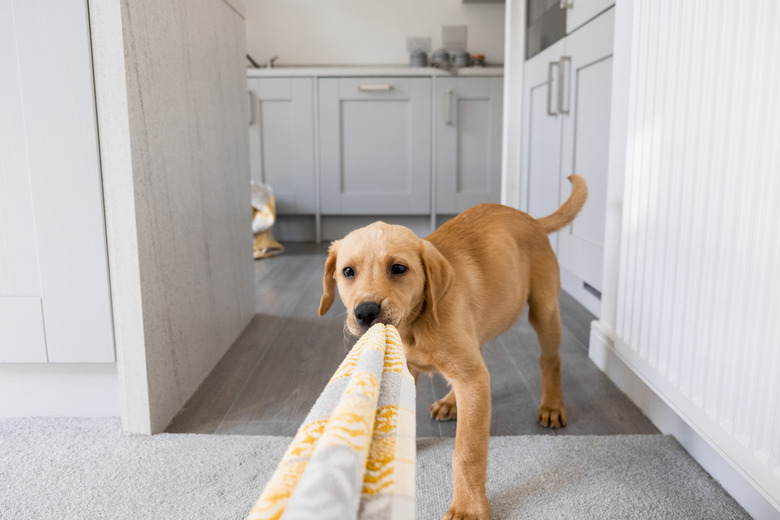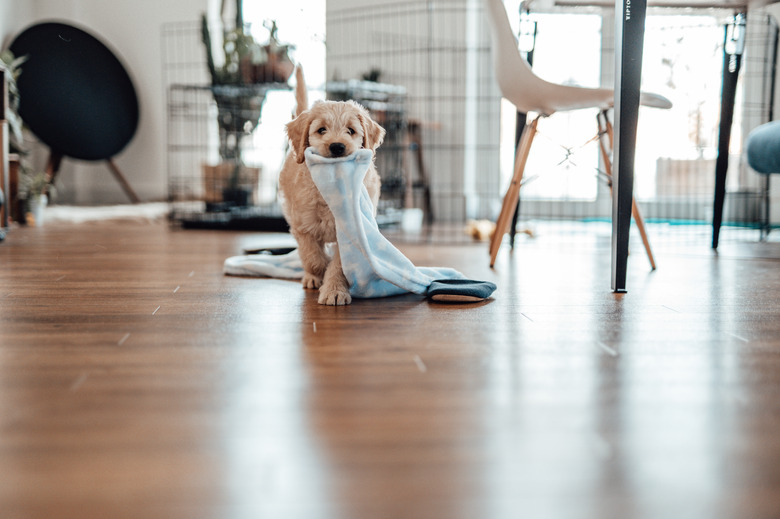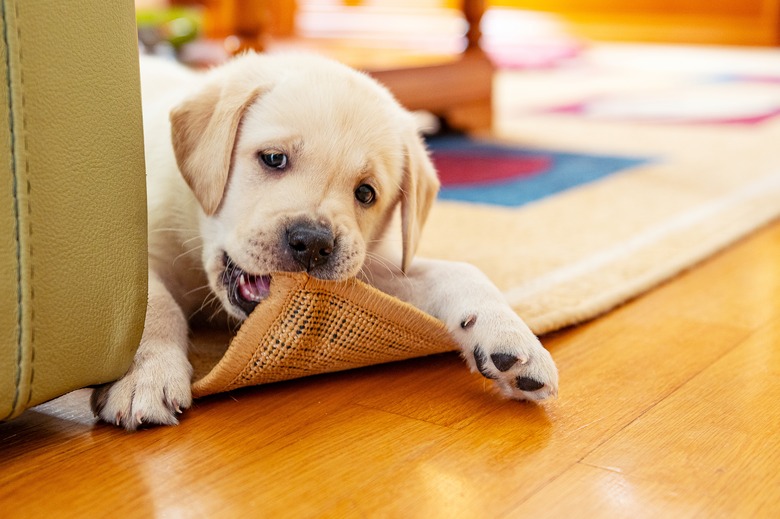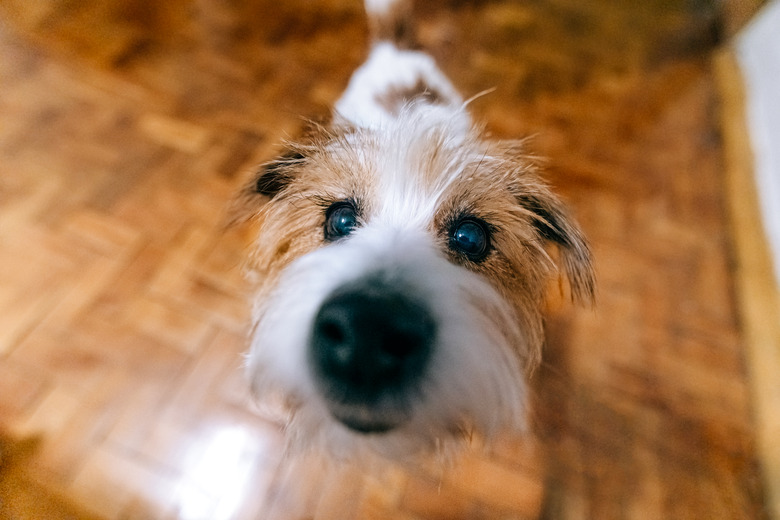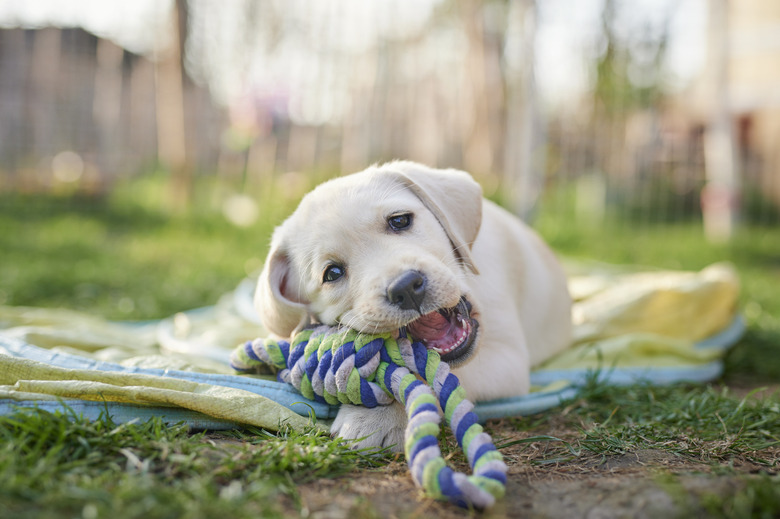How To Puppy-Proof Your Home
Before bringing a new puppy home, it's important to puppy-proof your home. Puppy-proofing helps to keep your dog safe by removing objects that could be harmful. It also helps to prevent damage to your belongings by reducing the number of things a puppy can get into or chew up.
Puppy-proofing in advance helps to reduce puppy parents' frustrations with their new family members. Here are some puppy-proofing tips to make pet parents' lives easier with a new dog.
What is puppy-proofing?
What is puppy-proofing?
Puppy-proofing is the process of moving objects that could harm your dog out of reach. When puppy-proofing an area of your house, you want to move easily breakable objects that could be eaten, swallowed, or chewed up. You can puppy-proof by putting items that could interest your puppy out of reach, into securely closing cabinets, or moving them to another area of your home.
How to puppy-proof your home
How to puppy-proof your home
The key to puppy-proofing is trying to eliminate the risk of your puppy getting into things that could cause injuries or make your puppy sick. To protect your puppy, you'll want to move items onto high shelves where the puppy can't reach, use childproof locks to keep your puppy from getting into cabinets and use pet gates to keep your puppy out of areas of your house that aren't safe for the puppy. Puppy-proofing is an ongoing process, and the older and more active your puppy gets, they will be able to reach higher, so you may need to move more objects.
Things to move
Things to move
To help keep your puppy from getting into toxic or dangerous household objects you can use high shelves and other high storage. This will help to keep harmful items out of reach of your puppy but allow you to still have access to household products. These are common objects around the house you'll want to move from areas your curious puppy can access:
Small items that could be choking hazards if chewed on or swallowed.
Sharp objects like scissors, knives, or razor blades.
Breakable items that could be knocked over and injure your puppy.
Electrical cords which can cause electrocution if plugged in and chewed, or strangulation.
Toiletries like shampoo, soap, tampons, razors, and condoms which are toxic or could become obstructions if your puppy tried to eat them.
Cleaners and cleaning products that are toxic if consumed.
Children's toys that could be chewed up and damaged or contain small parts that are choking or obstruction hazards.
Toxic House plants. These poisonous plants could harm your dog if they are chewed on so are best to remove from areas of the home where the puppy is.
Office supplies like rubber bands, pens, and paper clips that are choking hazards and could cause obstructions.
Human food and candy which could be toxic and harmful for your puppy as it may contain xylitol or other ingredients that are toxic to dogs.
Things to close or lock
Things to close or lock
While puppy-proofing in addition to picking up items that could be harmful to your puppy, you'll also want to prevent your puppy from being able to access things that are toxic or could be harmful to your dog. For your puppy's safety consider adding pet gates to keep puppies out of the area of your home. You can also add childproof latches to kitchen, bathroom, and utility cabinets that have things inside that could be harmful to your dog. When puppy-proofing, consider locking up:
Cabinets with sprays, laundry detergents, and cleaning products inside
Human medications and supplements
Cabinets with gardening fertilizers or pesticides, and insecticides inside
Toilet lids – this is especially important if you use in-bowl cleaners.
Garage areas where antifreeze and other car products are kept.
Why puppy-proof?
Why puppy-proof?
The most important reason to create a puppy safe home is to create a safe environment for your new puppy. Puppy-proofing protects your dog from chewing and eating things that could be toxic or dangerous for them.
Puppy-proofing is also important for training because it allows our dogs to be more successful as you aren't always needing to take things away from your dog. Instead, we and our puppies can be confident that toys are safe for them. By puppy-proofing, you can allow your dog safer freedom, to engage and explore their new home. This will help your puppy to settle into your family. Having puppy-proofed areas can also help with potty training as you can keep puppies in a safe place with easily cleanable flooring when you aren't able to fully supervise.
Provide alternatives
Provide alternatives
Puppies chew and get into things because they are naturally curious. Dogs and puppies use their mouths to understand the world around them. Teething puppies also are especially mouthy as they try to soothe their gums. Puppy-proofing your home will set your puppy up for success by making sure anything they have access to is safe for them to play with. This also helps with training and encourages your puppy to chew and play on safe chews and toys. With house training you can also familiarize your new puppy with spending time in a dog crate, spending time behind a baby gate, or a dog playpen which can help keep your puppy from accessing things that could harm them.
Look at your home through your puppy’s eyes
Look at your home through your puppy's eyes
As you are puppy-proofing your home, try to look at the area from your dog's perspective. It can be useful literally getting down on the floor and seeing what is at your puppy's eye-level. This can allow you to see things that will stand out to your puppy but might not have been immediately obvious for you. This can help you to get ahead of your puppy by protecting them from getting into things that could make them sick or injure them.
Happy puppy-proofing!
